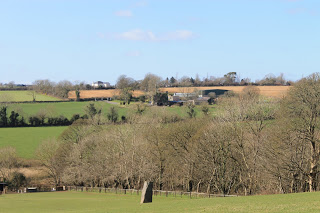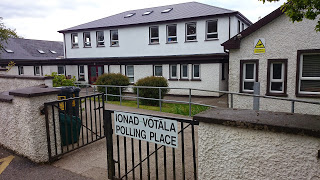One of my earliest memories as a child was my mother bringing us off on a Sunday afternoon to visit our Nanny in the Russianside. It was a smaller place then. From the cross roads you passed the homes of Martin Nugent, Joanie Hanlon, Andy Lannen and Nellie McDonalds, all on the right as you walked along. At Nellie’s there was a laneway to the right that brought you over to Powers fields and down a boreen to Ryan’s quay where at that stage a lady who had returned from Rhodesia named St Ledger lived. The road just continued to the left at Nellies and Mrs Ferguson and her “boys” Charlie and Tom were in the house on the right. Nanny was on the left with “Uncle Christy” and coming towards the Strand there was a lovely old barn and farmyard on the left and below it on the right lived Pat and Margaret O’Leary and family.
Nothing was made of the name, and I don’t remember ever thinking of it as strange or odd, or to even think of asking where the name came from. It was a matter of fact affair. The Russianside just was. Unremarkable, save for Nanny; where we always wanted to go, where we always felt special.
At some point in my teens I remember being in Nanny’s company when a visitor asked where the name had come from. As I recall, she said that locally people said it had a connection to a Russian ship, but the details she was hazy on. She always did say though, that even as a child she remembered the fishermen taking a short cut through the yard when the wind was North West. They had moored off their punts on the “Russian side of the village” Subsequently I have heard many different theories, and I have passed them on when asked but always with a grain of doubt or uncertainty.
 |
| Tall ships passing the Point Light, marking the Russianside |
Some have said that a Russian ship sank off the Russianside, and the sailors were buried along the strand. Interestingly enough Irish Wrecks list dozens of ships that sank in the harbour area, but none seem to have a Russian name. Others have said that as many as seven sick sailors perished aboard ship and were subsequently buried on the strand. I’ve never seen any bones unearthed, and I walked the strand almost every day as a child and at least once a week as an adult.
Illness is an age old concern with ships what with plague in particular. But again this is highly unlikely. Waterford, like many harbours you see, had their own isolation stations, such was the fears about diseases spreading from sailors. Ships entering Waterford had to declare any sickness to the “Hospital” above Passage East and sick sailors were rowed ashore and monitored. It appears to have been strictly monitored, The memory of the black death and other endemics probably ensured a strict enforcement.
Another account was that the Russians were refugees who were fleeing persecution in Russia and were put ashore to look for safe haven. Stories of the Russian pogroms against Jews do come to mind. Between 1881-4 there were over 200 incidents, but these dates would correspond with my Grandmothers Grandfathers time Bill Malone. She knew him, and any Jewish refugees would most certainly have been known to him. As a consequence I would imagine she would have heard some first hand account. That she didn’t would suggest that this is also unlikely. I have also read of earlier pogroms, at Odessa for example in 1821. I contacted the Jewish Museum recently to see if they had any knowledge. I was delighted to get a very quick and courteous response, but not any information to corroborate such a theory.
The final theory that I have heard comes from a good friend from Carlow, via Dublin, Boston, and heaven knows where else. Bob the scientist thinks its an Irish name, corrupted and anglicised from the Gaelic “Ros an Sidhe” For him this comes to Headland of the Fairy Folk. I think Christy Moran would have approved.
 |
| Ryans Shore with the Point light at its tip (on the right) |
Now we have talked about the Fairy Folk of the Sidhe only last week in relation to Cheekpoint or Rinn na Sidhe. Is it possible then the Russianside and Cheekpoint are both one in the same? Its possible and indeed probably. But who will ever be able to say for sure. Canon Power went with the Russian sailor story though! Which might be well as the blog is just gaining some traction in the federation!











